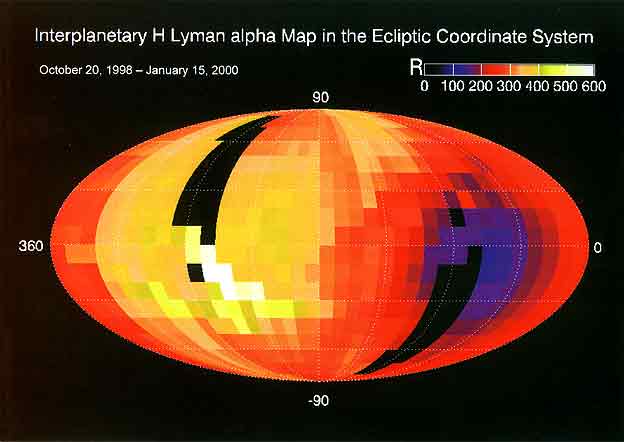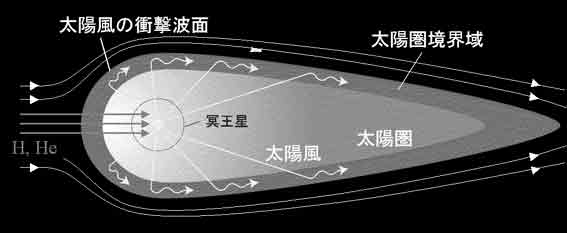The Heliosphere
|
|---|
 The solar system is located at a distance of 30,000 light years from the galactic center, orbiting around it together with the other stars of which the Galaxy consists. The solar system moves with a relative speed of 20km/s against the local interstellar medium. This relative motion of the local medium is observed as the interstellar wind. The solar magnetic field is brought by the solar wind to compose the solar magnetosphere. The magnetic field lines connect to the galactic field lines. Solar ultraviolet radiation ionizes interstellar hydrogen and helium atoms, which are removed from the solar magnetosphere by the solar wind. The region where the solar influence is significant (about 100AU) is called the heliosphere. The far side of the heliosphere has not been explored and, therefore, we have little knowledge about it.
The solar system is located at a distance of 30,000 light years from the galactic center, orbiting around it together with the other stars of which the Galaxy consists. The solar system moves with a relative speed of 20km/s against the local interstellar medium. This relative motion of the local medium is observed as the interstellar wind. The solar magnetic field is brought by the solar wind to compose the solar magnetosphere. The magnetic field lines connect to the galactic field lines. Solar ultraviolet radiation ionizes interstellar hydrogen and helium atoms, which are removed from the solar magnetosphere by the solar wind. The region where the solar influence is significant (about 100AU) is called the heliosphere. The far side of the heliosphere has not been explored and, therefore, we have little knowledge about it.
|
|


